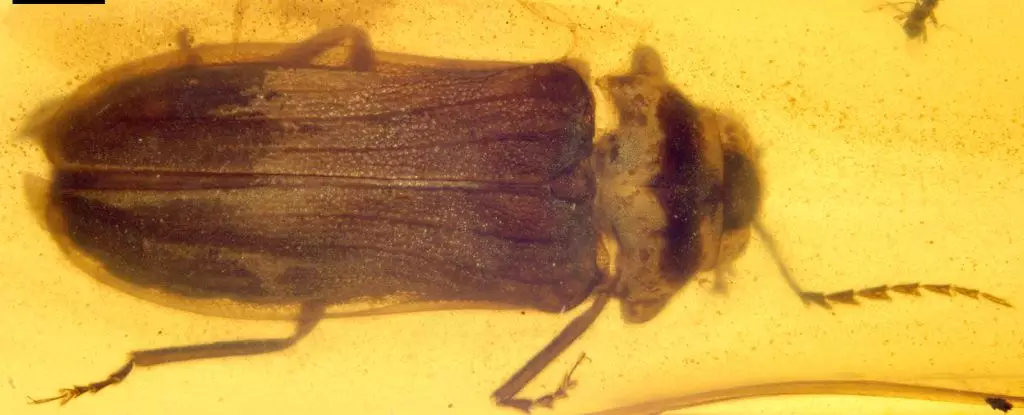The summer dusk, imbued with a soft glow from fireflies, provides a mesmerizing sight that captivates both young and old. These diminutive beetles, known for their bioluminescent properties, belong to approximately 2,500 species identified across the globe. Despite their ubiquity, the evolutionary origins of their distinctive glowing trait remain shrouded in mystery. Recent discoveries, particularly a remarkable specimen ensconced in amber, offer a fascinating glimpse into the evolutionary past of these enchanting insects.
A team of researchers, led by paleontologist Chenyang Cai from the Chinese Academy of Sciences, uncovered an 99-million-year-old firefly preserved in amber from northern Myanmar. Dubbed Flammarionella hehaikuni, this ancient beetle showcases a glowing mechanism that suggests a well-developed bioluminescence system existed during the Mesozoic era, reaffirming speculations about the evolutionary trajectory of fireflies. This specimen is significant, as it’s not an isolated find—it’s the second known Mesozoic firefly found in amber, join the ranks of Protoluciola albertalleni, which also exhibited a similar lantern-like glow.
Delving into Bioluminescence
Bioluminescence among fireflies primarily serves two crucial functions: facilitating mating interactions and providing a warning to potential predators about toxic compounds present in their bodies. The presence of lucibufagin toxins in some firefly species has led scientists to theorize that bioluminescence may have evolved independently of these toxins, raising intriguing questions about the initial functions of this phenomenon. This separation prompts scientists to reevaluate traditional views on the adaptive significance of bioluminescence in insects like Flammarionella hehaikuni.
The magnificently preserved specimen in amber reveals not only its bioluminescent properties but also unique morphological characteristics. Flammarionella hehaikuni, identified as female due to its anatomical traits, belongs to the subfamily Luciolinae, which is noted for its highly developed flashing lanterns situated at the tip of the abdomen. However, this specimen diverges from existing known varieties, displaying uniquely hairy antennae adorned with deep indentations. These adaptations potentially enhance the firefly’s ability to detect pheromones, facilitating interaction during mating rituals.
Comparative analyses with contemporary firefly species would provide further insights into how these physical attributes relate to reproduction and species identification. The divergent features observed in this ancient species underscore the evolutionary arms race of adaptations that shaped their survival over millions of years.
While the discovery of Flammarionella hehaikuni is an exciting leap in understanding the history of fireflies, it also emphasizes the need for continued exploration. The richness of the amber deposits in regions like Kachin State could yield even more specimens, potentially rewriting segments of entomological history. Finding male counterparts to Flammarionella would aid in producing a more complete picture of sexual dimorphism and mating behaviors within ancient fireflies.
Additionally, as researchers conduct further studies on the morphology and ecology of these preserved insects, there’s promise in unraveling secrets of their lifestyles and interactions within ancient ecosystems. Delving into the genetic and ecological frameworks of these species will enhance our appreciation of fireflies not just as seasonal marvels but as vital components of biodiversity.
The enchanting displays of fireflies are more than mere summer delights; they embody a complex legacy of evolutionary success. The findings regarding Flammarionella hehaikuni provide substantial clues about the ecological and biological traits that have allowed these creatures to thrive. As our understanding deepens through ongoing research and discoveries, we are reminded of the intricate threads that weave the tapestry of life on Earth—one glowing hue at a time.

Leave a Reply